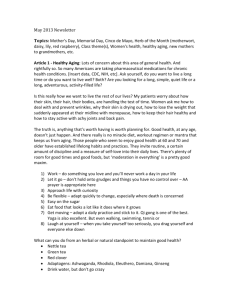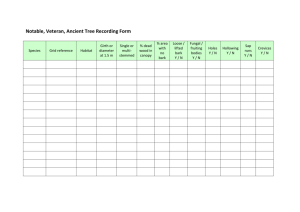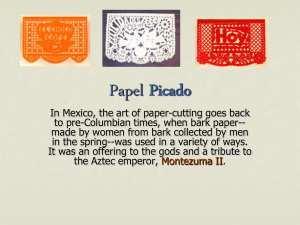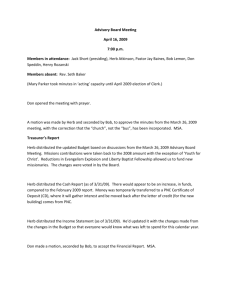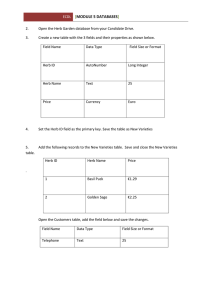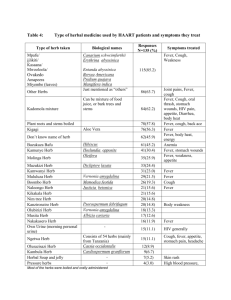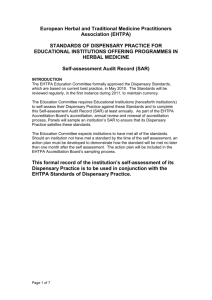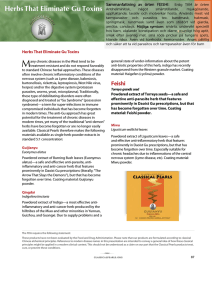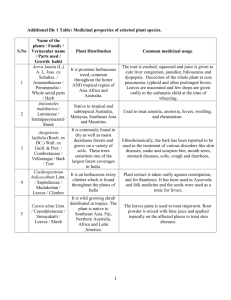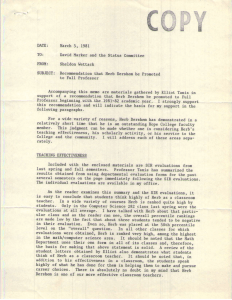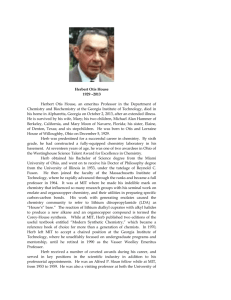DOC - Foundations In Herbal Medicine
advertisement
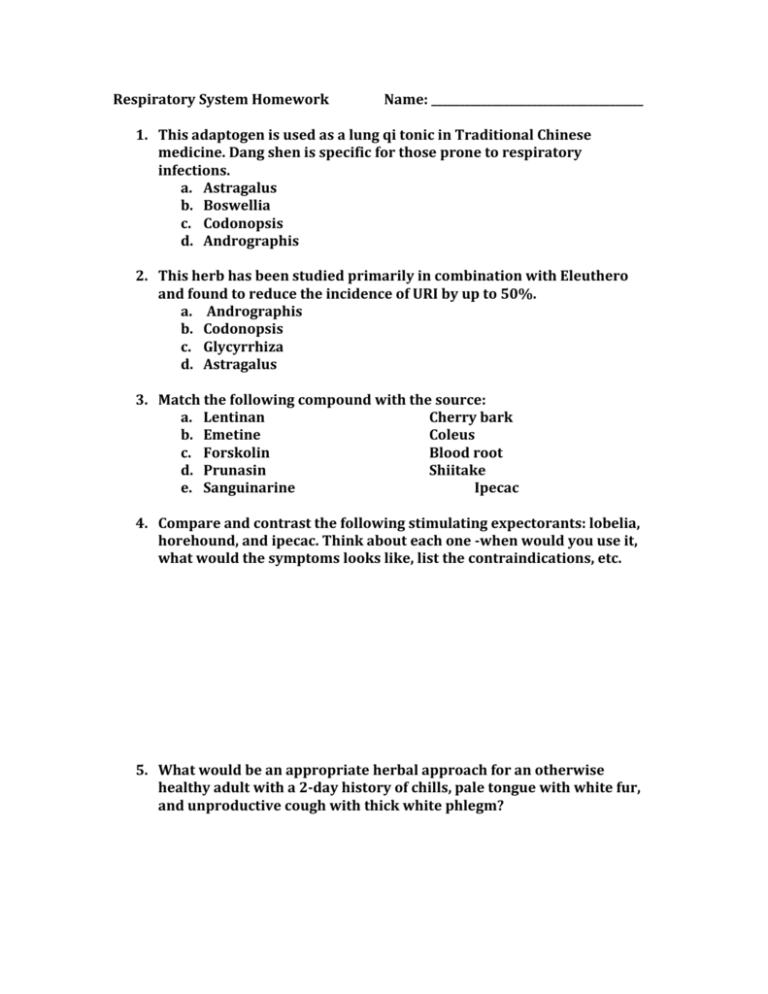
Respiratory System Homework Name: ______________________________________ 1. This adaptogen is used as a lung qi tonic in Traditional Chinese medicine. Dang shen is specific for those prone to respiratory infections. a. Astragalus b. Boswellia c. Codonopsis d. Andrographis 2. This herb has been studied primarily in combination with Eleuthero and found to reduce the incidence of URI by up to 50%. a. Andrographis b. Codonopsis c. Glycyrrhiza d. Astragalus 3. Match the following compound with the source: a. Lentinan Cherry bark b. Emetine Coleus c. Forskolin Blood root d. Prunasin Shiitake e. Sanguinarine Ipecac 4. Compare and contrast the following stimulating expectorants: lobelia, horehound, and ipecac. Think about each one -when would you use it, what would the symptoms looks like, list the contraindications, etc. 5. What would be an appropriate herbal approach for an otherwise healthy adult with a 2-day history of chills, pale tongue with white fur, and unproductive cough with thick white phlegm? 6. The stem bark of this herb has long been used in Ayurvedic medicine for what we now call the “atopic triad.” It is principally a mast cell stabilizer. a. Scutellaria baicalensis b. Albizzia lebbeck c. Boswellia serrata d. Verbascum thapsus 7. The gum resin of this plant is a potent inhibitor of 5-LOX. a. Glycyrrhiza glabra b. Salix alba c. Marrubium vulgare d. Boswellia serrata 8. Compare and contrast three herbs that are recognized as highly beneficial for dry cough. What are their similarities and differences? When and how would you use them? 9. This herb has been approved as a prophylaxis for migraine headache and there is also good evidence that it is effective for relieving seasonal allergies. a. Tylophora asthmatica b. Coleus forskholii c. Petasites hybridus d. Pelargonium sidoides 10. This class of herbs facilitates the removal of bronchial secretions from bronchi and trachea primarily due to the presence of alkaloids or saponins. a. Cooling diaphoretic b. Relaxing expectorant c. Stimulating expectorant d. Warming diaphoretic 11. The bark from this member of the rose family is a powerful sedative on the cough reflex, particularly for dry, irritable coughs. a. Pine bark b. Wild cherry c. Oak d. Licorice 12. An herbal equivalent to the asthma drug class beta-agonist is: a. Green tea b. Datura c. Khellin d. Ephedra 13. This adaptogen has a drying effect and is said to “astringe the jing.” a. Panax ginseng b. Schisandra c. Ammi visnaga d. Codonopsis 14. The North American herb rich in isobutylamides has long been revered for its beneficial effects on upper respiratory infections, sore throats and snakebites. a. Echinacea b. Yerba santa c. Pleurisy root d. Cherry bark 15. The flowers from this plant are used as a diaphoretic, while the berries are considered to have strong antiviral properties. a. Achillea millefolium b. Sambucus nigra c. Populus candicans d. Quercus alba 16. This herb was considered by many Eclectic physicians to be the diaphoretic of choice in high fevers. Excellent for relieving pain of pleurisy and intercostal neuralgia. Contains trace amounts cardenolide glycosides. a. Grindelia camporum b. Marrubium vulgare c. Polygala senega d. Asclepius tuberosa 17. The German Commission E approves the use of this herb for bronchitis, whooping cough and upper respiratory catarrh. The makers of Listerine put its antiseptic essential oil to good work years ago! a. Althaea officinalis b. Ocimum sanctum c. Thymus vulgaris d. Origanum vulgare 18. In Traditional Chinese Medicine, this is considered to be the protective energy that prevents illness caused by external forces. If deficient, one gets sick more often. a. Wei qi b. Huang qi c. Yang xu d. Wu wei zi 19. This member of the mint family has been used for centuries in India for asthma. It relaxes bronchial smooth muscles, stabilizes mast cells and has mild hypotensive properties. a. Scutellaria baicalensis b. Ephedra sinica c. Ocimum sanctum d. Coleus forskholii 20. Tell me about 2 herbs that you learned about in this module that you might consider using in your own family/life or in your clinical practice. Why? What intrigued you about them?
